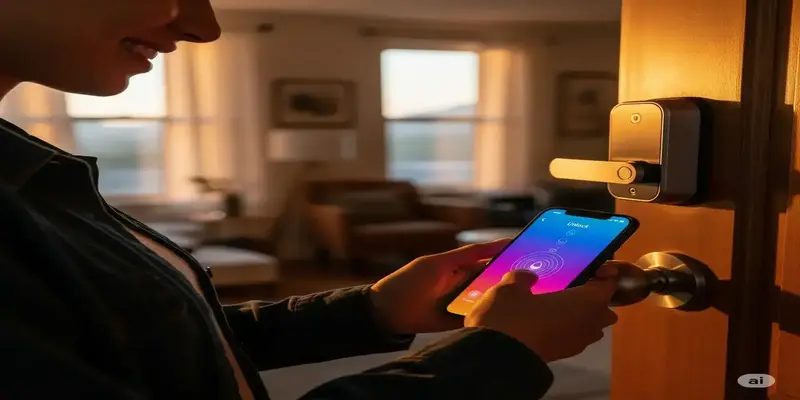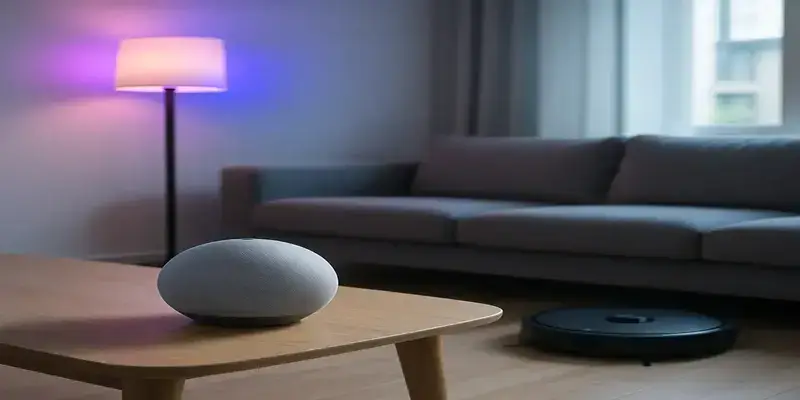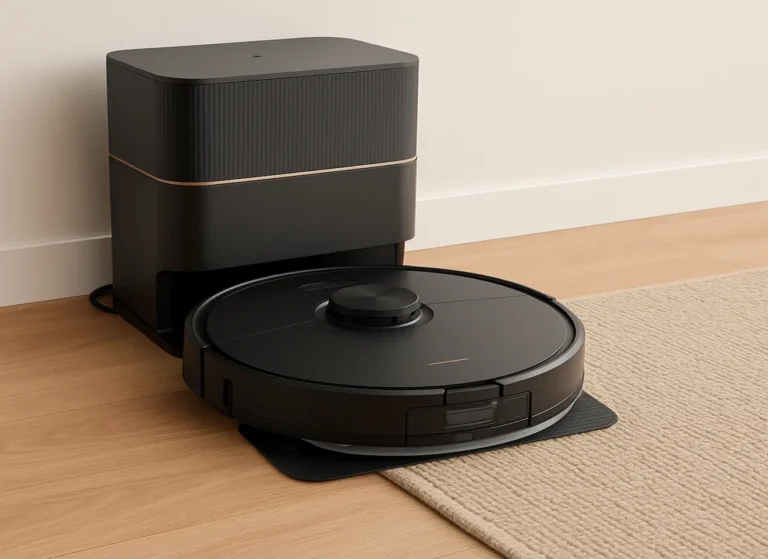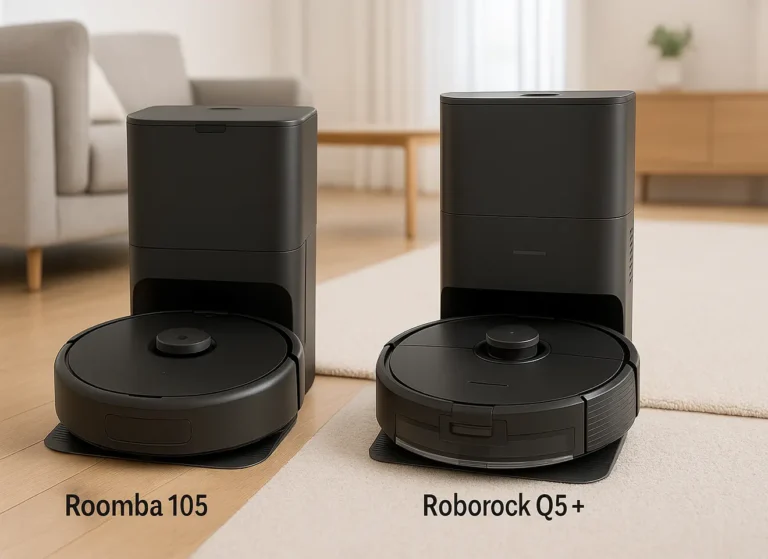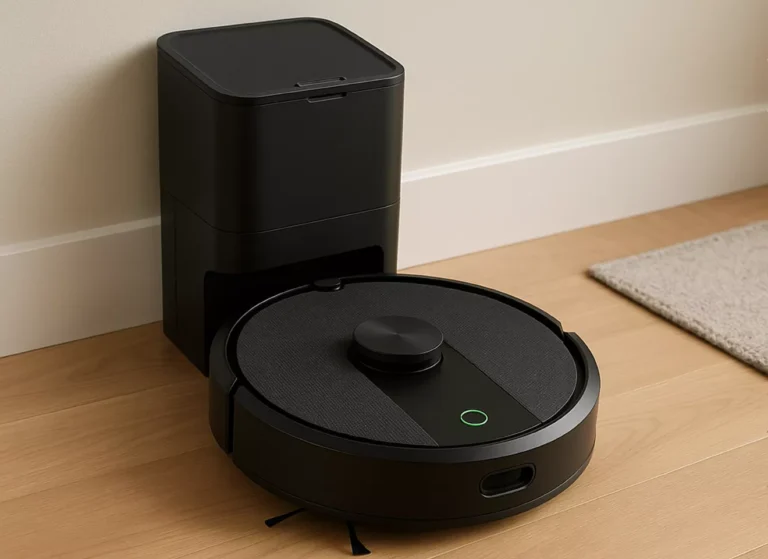The Brain of Your Rental: How Voice Assistants for Renters Create a Damage-Free Smart Apartment
Build a renter-friendly smart apartment without drilling or headaches. Set up Alexa or Google Home, add plug-in or battery devices, and craft quiet, portable routines. Protect privacy with roommates using Voice Match, Guest Mode, and PINs. When you move, reset and re-pair in minutes and take everything with you.
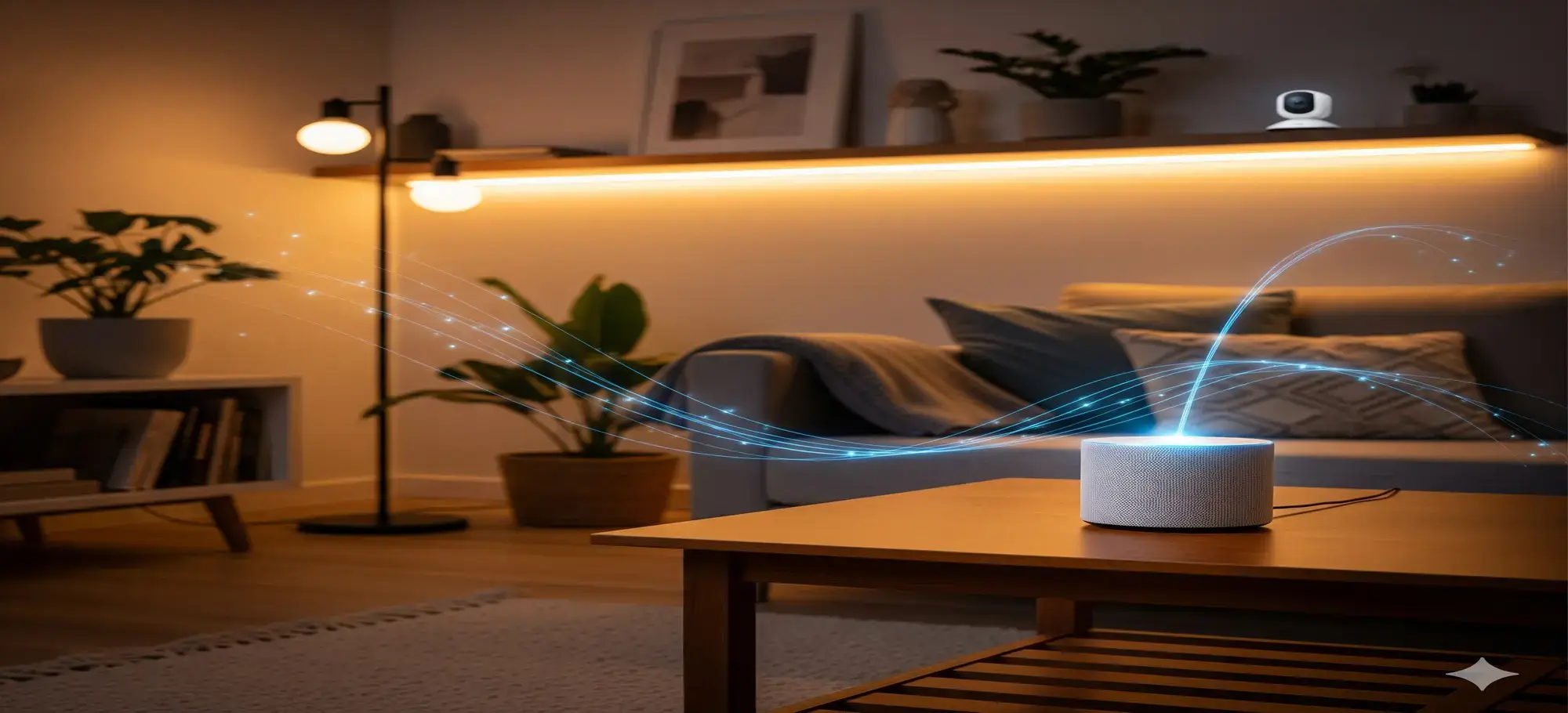
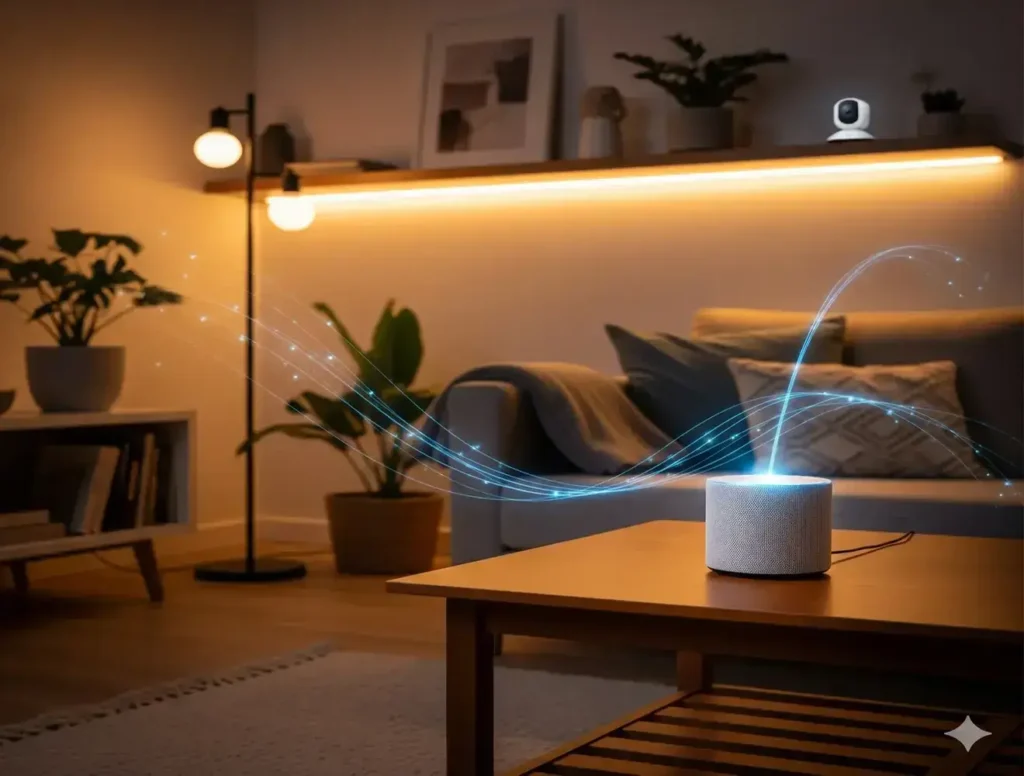
Why Your Landlord Secretly Wants You to Read This Guide
Renters want convenience, comfort, and safety without risking deposits. Landlords want walls intact and neighbors happy. Voice assistants for renters are the sweet spot: one central brain that coordinates plug-in devices, keeps things quiet, and leaves zero holes when you move out.
You avoid drilling, contracts, and complicated wiring. You keep control with your voice and a few taps. Best of all, everything fits in a box on moving day. That’s genuine damage-free smart living. This guide shows how to use voice assistants for renters with renter-safe gear and routines that won’t upset landlords or neighbors. For a broader foundation, see our smart home for renters guide.
Why Voice Assistants Are a Renter’s Best Option
No-Drill & Completely Portable
A speaker or display becomes the brain, while bulbs, strips, plugs, and battery sensors do the work. Adhesive mounts and tabletop placements leave no marks. Use removable pads rated for the device weight and surface; test on a hidden spot first. When the lease ends, you peel off, pack up, and go—no spackle, no arguments.
One Brain, Many Rooms
Create a “Home” in the app and name rooms and devices clearly. Simple names—Bedroom Lamp, Entry Plug, Kitchen Strip—make commands natural and reduce mistakes. Group lights you always control together, and create “scenes” like Movie Night or Study Mode to set multiple devices with a single phrase. The assistant turns scattered gadgets into one coordinated system you can control hands-free.
Roommate-Friendly & Privacy-First
Household sharing lets multiple people use the same home without exposing everything. Voice profiles and Voice Match recognize who’s speaking, so calendars and messages stay private. Guest Mode and purchase PINs keep visitors from ordering pizza at 2 a.m., while auto-delete manages voice recordings on a schedule. You can also hide personal results on shared displays and restrict who can control door-adjacent devices.
Scalable Without Contracts
Start with one smart plug and a bulb. Add sensors or a compact indoor camera on a shelf when you’re ready. No long agreements, no drilling, just gradual upgrades that follow you to your next place. As your needs change, you can move devices between rooms or lend them to roommates—software keeps the logic intact.
Cost-Effective by Design
Because you reuse the same brain and app as you grow, you don’t need specialized hubs or installers. Portable, no-drill gear focuses on the essentials: lighting, plugs, notifications, simple security, and automation. The payoff is flexibility—you keep the investment when you move, rather than leaving hardware behind.
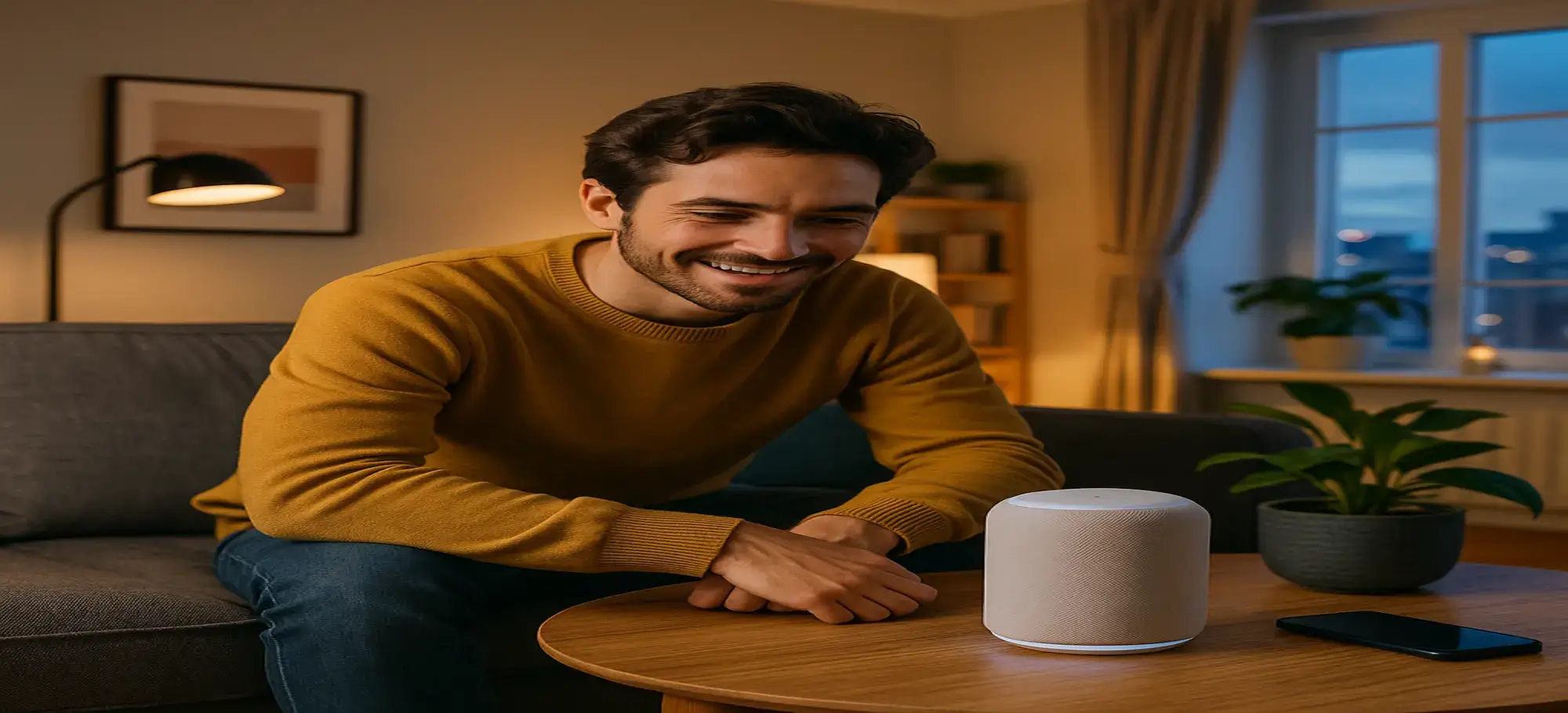
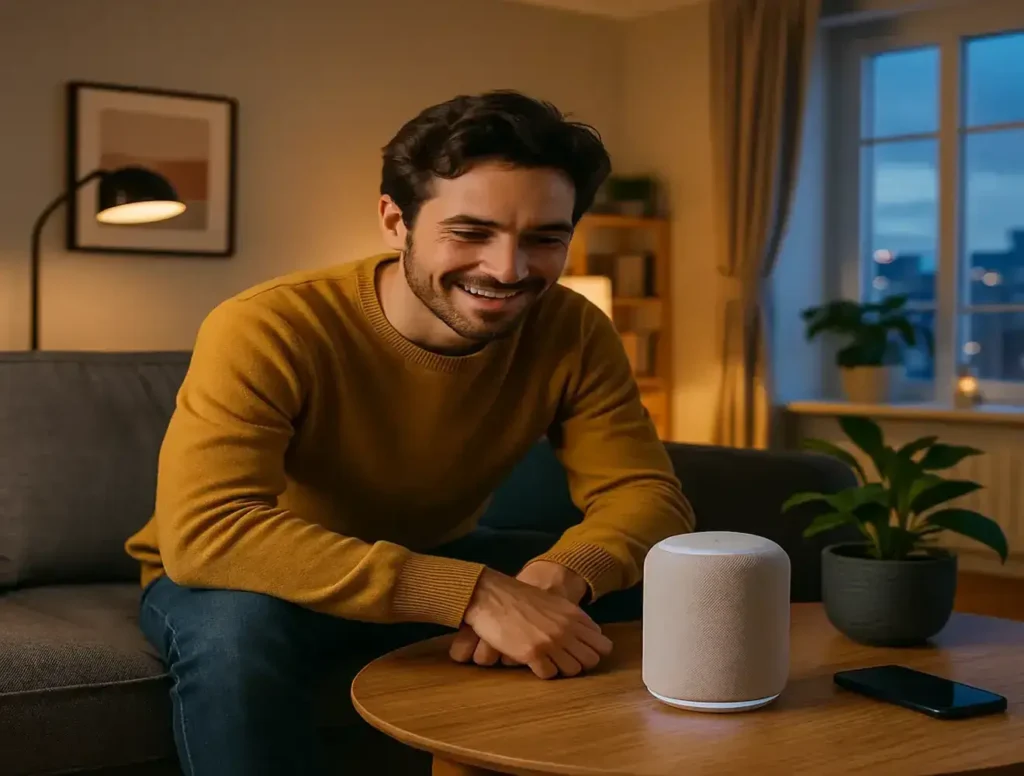
How to Build a Damage-Free Smart Apartment (Step by Step)
The steps below reference both Alexa and Google Home. Keep the device manuals handy. If your building uses a captive Wi-Fi portal, consider a travel router or your phone’s hotspot for initial pairing.
Step 1: Prep (Apps, Accounts, Wi-Fi, and Names)
Install the Alexa or Google Home app and sign in. Confirm whether your devices need 2.4 GHz, 5 GHz, or both, and note your network name and password. If your router combines bands under one SSID, enable a temporary 2.4 GHz-only network for pairing. Decide on short device names you can pronounce easily—avoid clever puns that are hard to say quickly. If you’re starting from scratch, review the essentials in our smart home for renters playbook.
Step 2: Create Your “Home” and Rooms
In the app, create your Home and add rooms (Bedroom, Entry, Kitchen). Add your address so weather and location features work. Clear room structure makes it obvious which lights or plugs you mean, reducing misfires and roommate confusion. For shared spaces, agree on names in advance so commands feel natural to everyone. For device ideas, check our top smart home devices for renters list.
Step 3: Add the Brain (Speaker/Display)
Plug in your speaker or display and follow the app’s prompts. Place it where your voice carries—usually the living room or kitchen entry. Avoid corners and loud appliances; reflective surfaces can cause echoes that degrade recognition. Set a comfortable default volume, choose your language, and link music or podcast services you actually use. If you’re leaning Amazon, see our quick look at the Amazon Echo Dot for compact apartments.
Step 4: Add No-Drill Devices (Plug, Bulb, Sensor)
Pair a smart plug and rename it to match a real-world thing, not the outlet—Bedroom Lamp beats Plug 1. Add bulbs or light strips and group them by room. Many accessories pair faster through the manufacturer’s app first, then appear in Alexa or Google via a linked account—follow the on-screen steps. For sensors and buttons, choose battery-powered gear you can place with adhesive pads and remove cleanly later.
Step 5: Share the Home (Roommates & Privacy)
Invite roommates to the home so they can control shared devices. Enable Voice ID or Voice Match so the system recognizes each person, and limit personal results on shared displays. Turn off voice purchases or add a purchase PIN, and set voice recordings to auto-delete after a time window you’re comfortable with. If someone moves out, remove their profile and review routine ownership. Learn more about Alexa Voice ID setup and Voice Match on Google Home.
Step 6: Build Routines That Work in Apartments
For voice assistants for renters, start with Quiet Hours: lower volume and enable Do Not Disturb from 10 p.m. to morning. Create a Delivery Mode that flashes a light in the entry instead of playing a loud chime. Add Morning and Evening routines for lights, weather, and reminders. Consider a Work-From-Home Start routine that sets lights, reads the day’s events, and starts a focus playlist. For step-by-step examples, see the official page on Alexa Routines.
Recipe examples:
Trigger: time (10:00 p.m.) → Actions: set volume to 2, enable Do Not Disturb, turn off living-room lights.
Trigger: smart button at the door → Actions: flash entry lamp for 30 seconds, announce “Package arrived” on the living-room speaker.
Trigger: sunrise → Actions: fade bedroom lamp to 50%, read weather and calendar, start coffee on a smart plug.
Step 7: Move-Out Checklist (True Portability)
Back up your routine structure in notes. Factory-reset any device that’s glitchy, and remove devices you won’t bring. Label cables and power bricks to avoid mix-ups. In your new place, connect the brain to Wi-Fi first, then re-pair devices room by room and rename them to match the new layout. Finish by testing routines one at a time before your first night.
Step 8: Troubleshooting for Renters
If the assistant says “not responding,” check Wi-Fi first, then power-cycle the device. Many gadgets only pair on 2.4 GHz, so ensure your phone and device are on the right band. Separate 2.4 and 5 GHz SSIDs if needed, then merge later. If responses are delayed, reduce interference by moving the speaker away from microwaves and metal shelving. Some Echo models include eero built-in, which extends only eero networks—plan accordingly.
Pro Tips for Apartment Dwellers
Put the “brain” where you naturally speak the most; kitchens and open living spaces often win.
Keep device names short and obvious; avoid duplicates across rooms.
Use schedules and geolocation sparingly to avoid surprises at 3 a.m.
Place motion sensors where foot traffic is predictable, like hallways and entryways.
If your building Wi-Fi is unstable, a small mesh or travel router can reduce headaches.
Automations should be quiet-first: lights and notifications are kinder than beeps.
Mount displays with removable adhesives only; check paint type and test first.
Create a “Guest” or “Party” scene that brightens areas and disables sensitive routines temporarily.
Use routines with conditions (time, presence) to keep automations polite in shared spaces.
Keep a short cheat sheet of voice commands on the fridge so guests learn fast.
Periodically review permissions and shared access, especially after guests or roommate changes; a quick audit prevents surprises later.
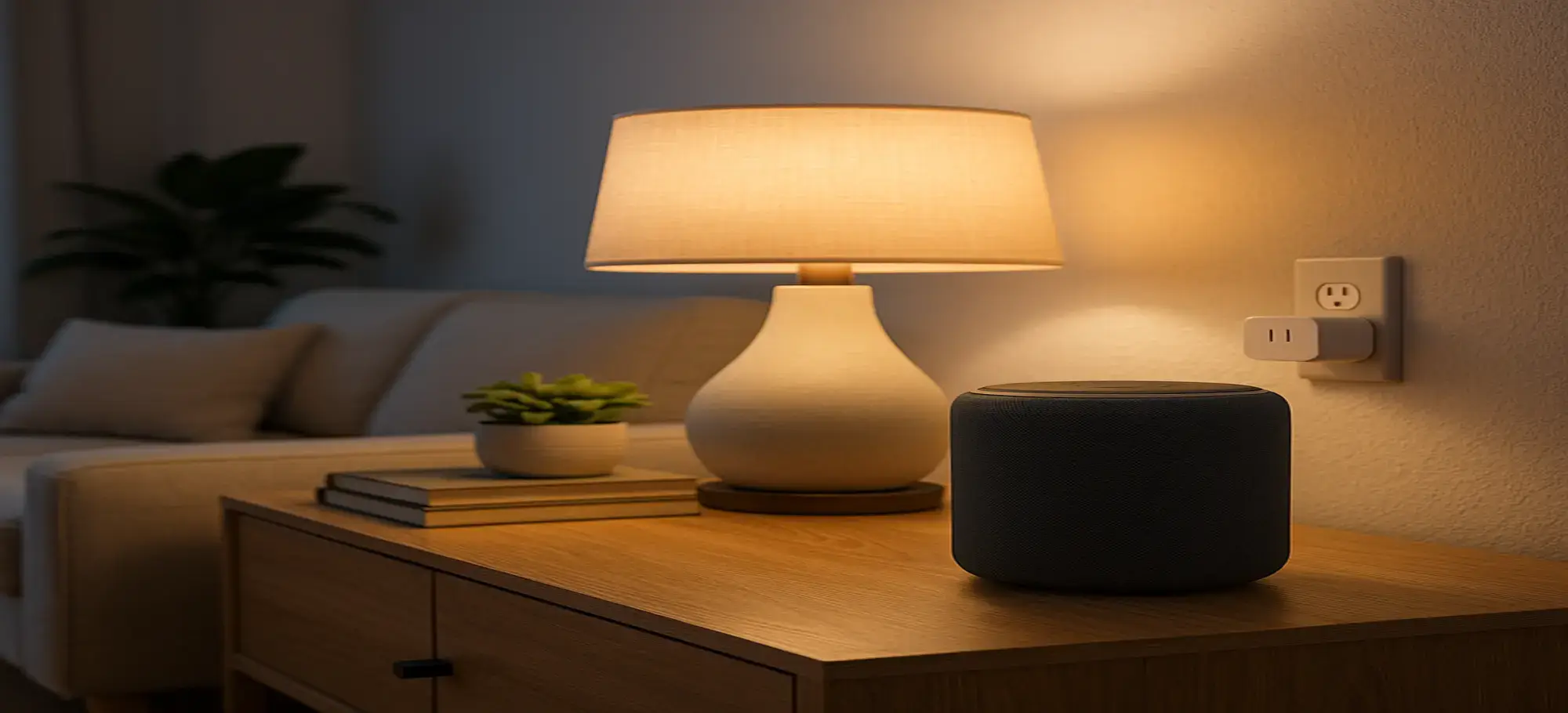
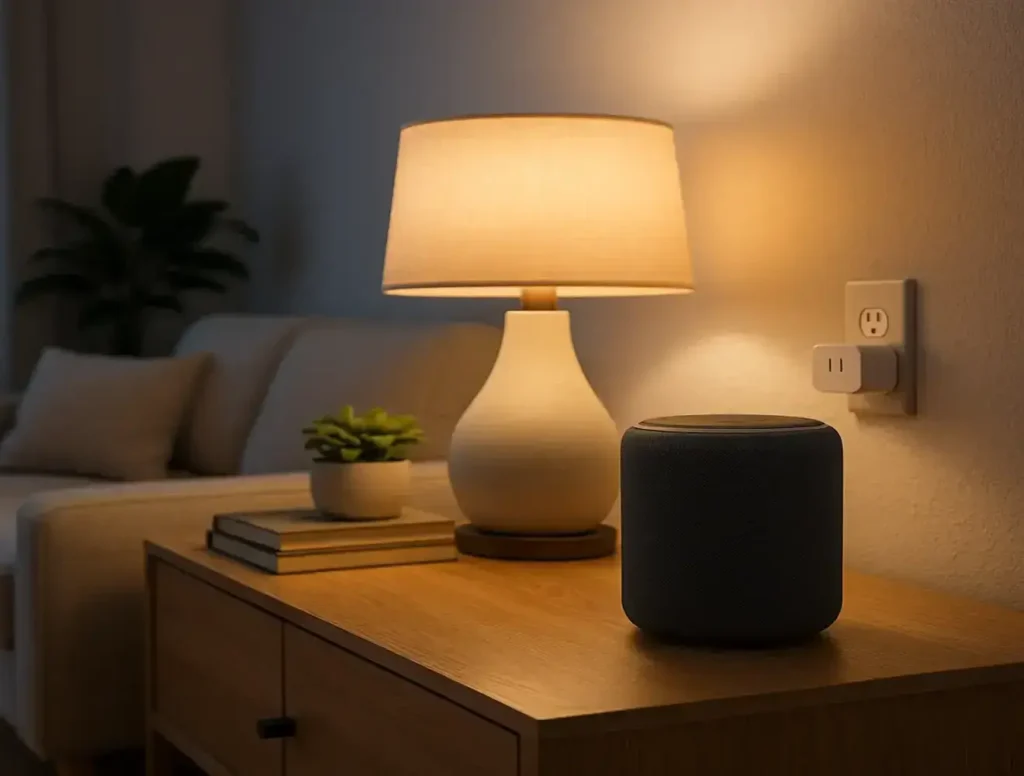
Frequently Asked Questions (FAQ)
Can I share control with roommates without exposing everything?
Yes. Add them as household members and use Voice ID or Voice Match so personal responses stay personal. For visitors, enable Guest Mode to allow basic commands without unlocking private content.
How do I limit volume automatically at night?
Create a Quiet Hours routine that sets a low volume and enables Do Not Disturb during your sleep window. You can still allow alarms or emergency notifications if you prefer. Learn how to use Alexa Do Not Disturb.
What if my building uses a captive Wi-Fi portal?
Pairing can be tricky. Use a travel router that authenticates once and broadcasts your own private SSID, or set up devices on your phone’s hotspot and then migrate them to the travel router’s network.
Do my routines and settings move with me?
Most routines are stored in your account, so they move with you. Devices usually need to be re-paired to the new Wi-Fi, and names may need updating to match your new rooms.
How do I prevent accidental voice purchases?
Disable voice purchasing entirely or require a PIN. Both platforms support purchase controls, and you can also restrict who has permission to buy.
What should I do when the assistant misunderstands or triggers itself?
Lower sensitivity if available, move the device away from TVs, and use clearer device names. If false triggers persist, enable confirmation for sensitive commands or shorten wake-word range where possible.
Can I build this without constant internet?
Basic voice control and cloud routines rely on an internet connection. Some devices support local control for on/off and dimming, but most advanced features work best with steady Wi-Fi.
Is there anything I should check with my lease or insurance?
Yes. Ensure your lease allows removable adhesives and plug-in gear. For cameras, point them indoors only and avoid shared hallways. If you add many devices, confirm they won’t violate occupancy or noise rules.
Final Reflection
You don’t need tools, holes, or headaches to make a small place feel smart. With voice assistants for renters, a few plug-in or battery devices, and thoughtful routines, your apartment becomes responsive, quiet, and portable. Start small—one plug, one bulb, one routine—and expand as you learn. When the lease is up, you take the brain, the gadgets, and the comfort with you—no damage, no drama.
Related posts:
- THE ONLY 10 SMART DEVICES YOU REALLY NEED FOR YOUR RENTAL HOME (2025 EDITION) The Only 10 Smart Home Devices for Renters You Really...
- How to Create Alexa Routines for Home Automation How to Create Alexa Routines for Home Automation by EasySmartHomeGuide...
- Voice Control Smart Home: The New Era of Intelligent Control Voice Control Smart Home: The New Era of Intelligent Control...
- What Is Amazon Alexa? A Beginner’s Guide to Your Voice-Controlled Assistant What Is Amazon Alexa? A Beginner’s Guide to Your Voice-Controlled...

